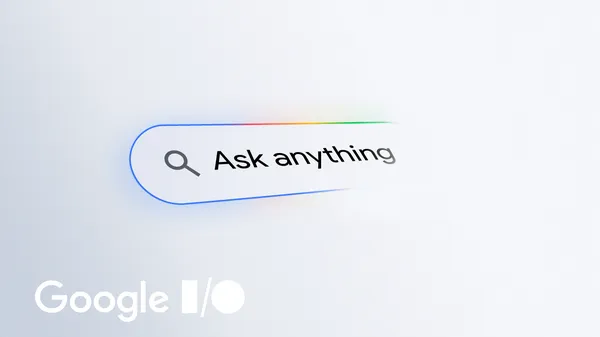 Today at I/O, we showed how we’re enhancing Search with our latest Gemini models via AI Mode.
Today at I/O, we showed how we’re enhancing Search with our latest Gemini models via AI Mode.
AI in Search: Going beyond information to intelligence
 Today at I/O, we showed how we’re enhancing Search with our latest Gemini models via AI Mode.
Today at I/O, we showed how we’re enhancing Search with our latest Gemini models via AI Mode.
 Today at I/O, we showed how we’re enhancing Search with our latest Gemini models via AI Mode.
Today at I/O, we showed how we’re enhancing Search with our latest Gemini models via AI Mode.
 We’re launching Circle to Search and an AI-powered multisearch experience to help you search even more naturally.
We’re launching Circle to Search and an AI-powered multisearch experience to help you search even more naturally.
 A look at the deep, technical challenges we’ve solved to improve Google Search over the last 25 years.
A look at the deep, technical challenges we’ve solved to improve Google Search over the last 25 years.
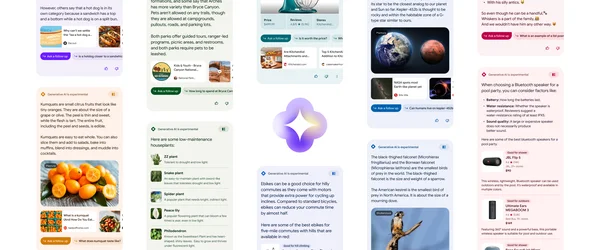 We’re starting with an experiment in Search Labs called SGE, Search Generative Experience, which uses generative AI.
We’re starting with an experiment in Search Labs called SGE, Search Generative Experience, which uses generative AI.
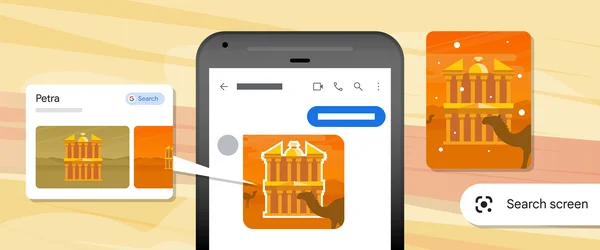 We’re sharing a few new ways we’re applying our advancements in AI to make exploring information even more natural and intuitive.
We’re sharing a few new ways we’re applying our advancements in AI to make exploring information even more natural and intuitive.
Our Maps 101 series goes behind the scenes to share how we help you navigate, explore and get things done every single day. Over the past 15 years, we’ve provided maps in more than 220 countries and territories and now surface helpful information for more than 200 million places. These efforts bring helpful local information to your fingertips in Google Maps and produce better Google Search results, helping you connect with nearby places and businesses.
In fact, Search results that show local places and businesses now drive more than 4 billion connections between customers and businesses every month. This includes more than 2 billion monthly website clicks and other connections, such as phone calls, directions, food ordering and reservations.
Today, we’ll share more about the innovations and investments that help build an accurate and up-to-date understanding of places for the billions of people looking for local information on Search and Maps.
Maximizing Street View with breakthroughs in AI
Street View imagery lets you virtually explore the world, and helps us accurately reflect local information about places in Maps and Search. We’ve travelled more than 10 million miles across 87 countries to capture this imagery and bring new information online—from unmapped roads to new businesses.
Applying artificial intelligence to our more than 170 billion Street View images helps us create high-quality maps faster than we could before. For instance, applying machine learning models to Street View imagery has improved the accuracy of one-third of the addresses in Google Maps and Search, resulting in more reliable maps as people look for a local business or navigate to a destination.
Text recognition in the natural environment is challenging—especially at scale. The average Street View photo has visual distractions like distortions, cluttered backgrounds with extraneous text and awkward viewpoints. After years of teaching machine learning models, our text recognition systems can tune out these distractions and detect business names and addresses even when they're handwritten on the side of a building or abbreviated. These models can understand a variety of languages across various scripts too, from Latin, Cyrillic and Thai to Chinese, Japanese and Korean.
In the last few years alone, processing imagery with AI has been one of the important ways we’ve been able to add more than 10 billion edits to our library of places, providing people with updated phone numbers, business hours and locations as they use Maps and Search.
Building data partnerships with authoritative sources worldwide
Thanks to partnerships covering more than 10,000 local governments, municipal agencies and organizations around the world, we're able to reflect the latest information in Search and Maps results and help local authorities reach even more people in their communities with important updates. This includes everything from bike lanes and road closures to the addresses of hospitals and food banks. Our teams vet each authoritative data source to make sure it’s accurate before it appears on Search and Maps.
Working with authorities around the world also helps us quickly gather and surface critical information. This year, these partnerships made it possible to make important updates relevant to COVID-19. When you search for “COVID test” on Search and Maps we now show you more than 17,000 COVID-19 testing centers across 20 countries and all 50 U.S. states. You can also see important details like if appointments are required, who can get tested and if there’s drive-through testing.
These details are crucial and accuracy is key, which is why we lean on authoritative sources to help us surface this information in Maps and Search.
A global community contributes to make Search and Maps better
To ensure our products reflect the real world as fast as it changes, we enable people everywhere to contribute their local knowledge. Every day, people make millions of contributions to Google Maps, like reviews, photos, address updates and more. And we’re seeing more people contributing than ever before. In the past 3 years, the number of reviews, ratings and photos people have added to Google Maps more than doubled.
With local details from people in Maps and Search, it’s easier to make more informed decisions. You can quickly find reviews when looking for a mechanic, see photos others have added for a park you’d like to explore, and find your convenience store’s new hours.
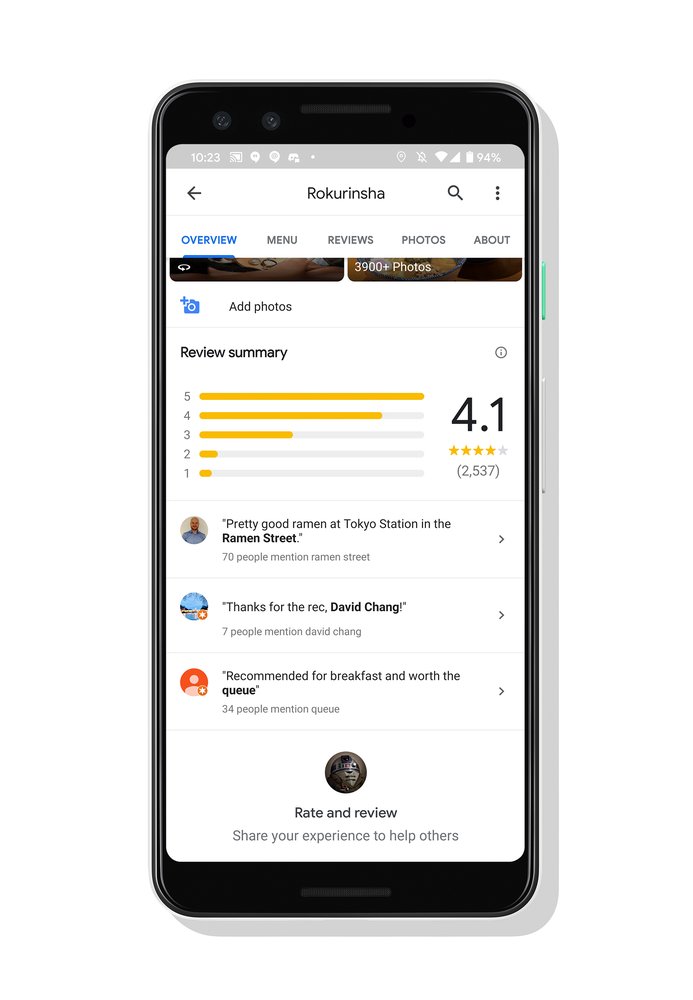
People’s reviews on Maps and Search make it easier to discover new places and learn about businesses nearby.
This year, as cities and countries instituted restrictions throughout the pandemic, many places temporarily closed or changed their operations. While businesses can indicate if they are open with their Google My Business listing, we’ve also made it easy for anyone to mark a business as open or temporarily closed on Search and Maps by simply suggesting an edit. Over the course of the pandemic, people have submitted millions of temporary closure and reopen reports, helping eliminate the uncertainty about which businesses are open and when.
Giving business owners free tools to connect with customers online
One of the most important ways we help local businesses succeed is by connecting them with customers online. Business owners can claim their free Business Profile and connect directly with customers across Search and Maps via phone calls, messages and reservations. They can also share accurate information about their business, including opening hours, services offered and contact information. And each month Google connects people with more than 120 million businesses that don't have websites, helping small business owners who aren’t online attract more customers.
Over the last five years, we’ve made more than a thousand improvements to Business Profiles, making it easier for merchants to connect with customers and share updates online. We recently made this even easier by adding new ways for merchants to view and update their Business Profile directly from Search and Maps.
With the pandemic causing daily disruptions worldwide, Google has helped businesses keep customers updated about everything from new services to adjusted store capacity and hours. Since the start of COVID-19, businesses made nearly 700 million edits to their Business Profiles, about double the number of changes made during the same time last year.
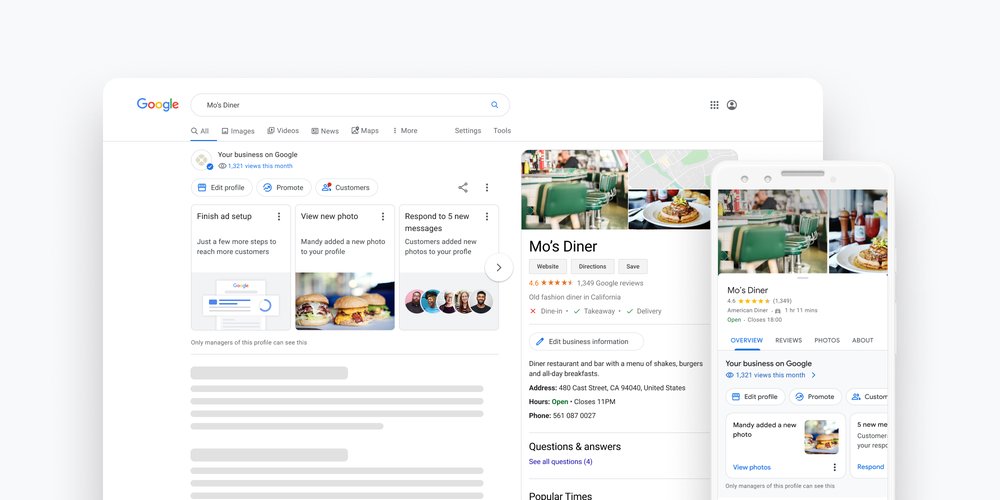
It’s easy for a business owner to update their Business Profile and engage with customers directly from Search and Maps.
Gathering local information in totally new ways
To help people find what they need in a world that changes by the minute, we’ve developed new ways to find and surface information.
For example, people tend to avoid crowded stores and long lines—and this has been especially true during the pandemic. Popular times and live busyness information help people see how busy a place tends to be at a specific time or at that very moment. Gone are the days of guessing the best time to go grocery shopping! We’re expanding live busyness information to millions of places globally and to include essential places like gas stations, grocery stores, laundromats and pharmacies.
Google’s conversational technology, Duplex, has helped us scale our ability to confirm updated information for places. Since the beginning of the pandemic, we’ve put Duplex to work making calls to businesses in eight countries—from New Zealand to the United States—to confirm things like opening hours or whether they offer takeout and delivery. This has helped us make millions of updates to business information that have been seen more than 20 billion times in Maps and Search.
Building the most helpful map of an infinitely detailed world
Beyond the technologies we’ve developed, our global operations teams play a role in nearly every aspect of mapmaking. They gather data, train machine learning models that help us index information from imagery, fix problems and evaluate authoritative data sources. They also build and maintain the automated systems that protect people from fake contributed content and even help small business owners set up Google My Business accounts.
All this to say, our work to organize the world's information and make it accessible and useful is never done. Given the pace of change, there’s never been a more important time for us to be helpful.
Fifteen years ago, we launched Google Maps as a useful way to help people get around. Working on Google’s geo efforts for more than 15 years, watching Maps grow into what it is today has been an unbelievable experience. As we’ve added features and capabilities, Google Maps has evolved into much more than a website that gives you turn-by-turn directions. Today, it’s a gateway to exploring the world—both digitally and in real life, on foot or by car, via public transit or a wheelchair.
Pardon the pun, but it’s been a long road! And in honor of Google Maps’s birthday, we’re looking back at some of the most important and exciting moments along the way.
1. Google Maps is born. On Feb 8, 2005, Google Maps was first launched for desktop as a new solution to help people “get from point A to point B.” Today, Google Maps is used by more than 1 billion people all over the world every month.
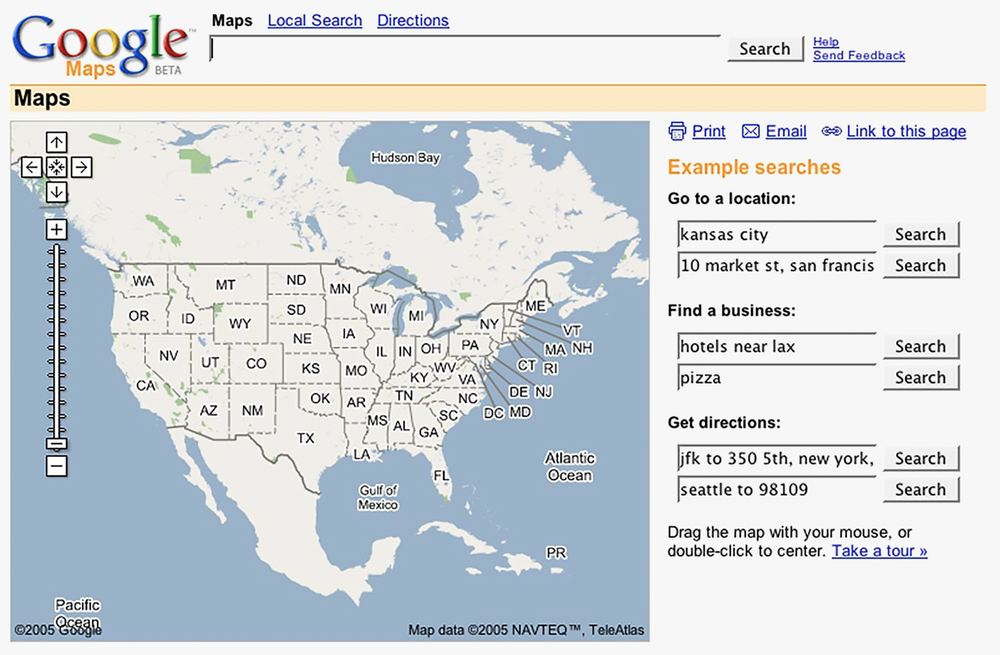
Google Maps in 2005
2. Introducing Google Earth.Just a few months later, Google Earth landed, bringing 3D views of the planet to desktops. Imaging technology has improved significantly since then, and now Google Earth features more than 36 million square miles of high-definition satellite images for digital explorers to journey through.
3. Delivered to developers. It’s difficult to imagine a time when sites all over the web didn’t embed Google Maps into their pages—but it wasn’t until mid-2005 that the Google Maps API was announced. Today, more than 5 million websites and apps use Google Maps Platform every week.
4. Google Trip Planner takes on Portland.In December 2005, Portland, Oregon became the first city to use Transit Trip Planner, helping commuters see public transit schedules and routes. It started as a standalone product but was eventually folded into Google Maps. Over the years, the feature made its way to cities across the globe.
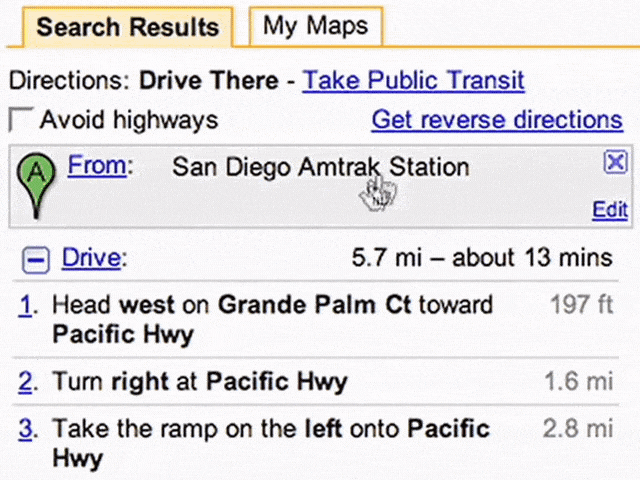
A clip from a 2008 video showing a public transit trip
5. Real-time traffic news. Nobody likes traffic—but traffic updates are another story. About two years after launching Google Maps, we introduced real-time info on traffic conditions for more than 30 U.S. cities. And so the phrase “there’s a lot of red...” was born.
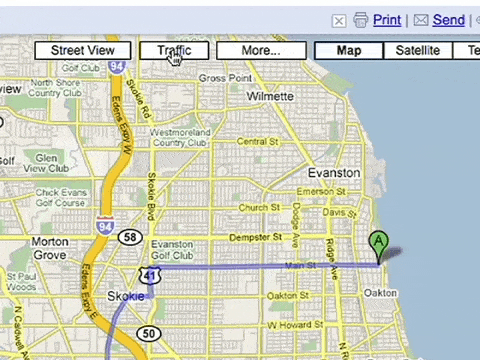
An early version of traffic conditions in Maps (on desktop!)
6. Take it to the Street View. May 29, 2007 marked the debut of Street View, which has become a much-beloved part of Google Maps. To collect imagery for Street View, we’ve strapped cameras to everything from snowmobiles to camels, and in total, captured more than 10 million miles.
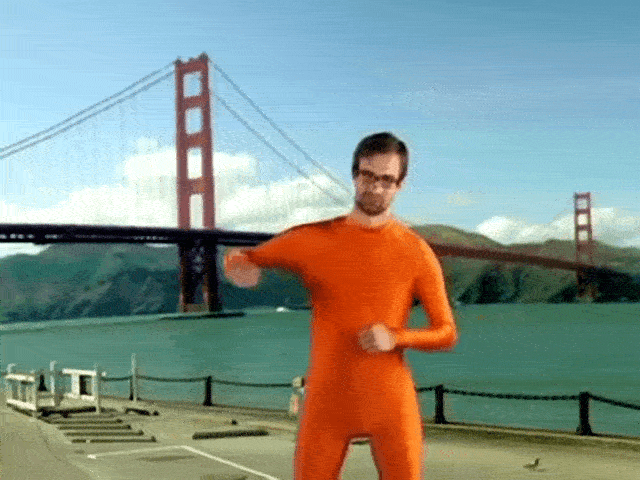
Street View might win the award for Google’s quirkiest launch video ever.
7. Maps goes mobile.Yes, there was a time before smartphones could direct you anywhere and everywhere. In November 2007, Google Maps made the leap from desktop to mobile phones and was first available for Blackberry and Palm devices. In 2008, our first Android app launched, followed by the iOS app in 2012.
8. Navigation gets the green light. In 2009, a welcome update to Maps brought turn-by-turn navigation to the app. No more getting lost after you missed a turn!
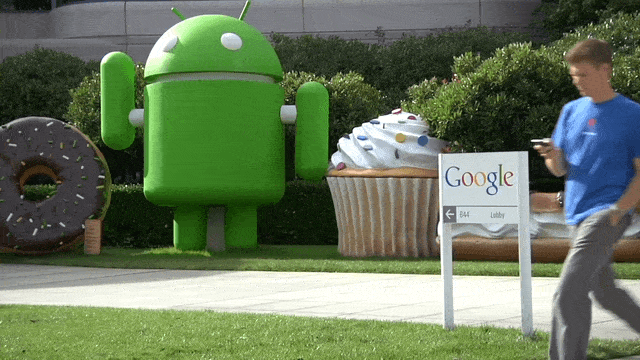
A clip from a 2009 launch video for turn-by-turn navigation. Groovy.
9. Street View Trekker takes us to new heights—literally. You might have thought Street View was already capturing unusual places, but in 2012 we introduced the Street View Trekker, bringing all the high-tech equipment needed to capture imagery into a backpack. We first took the Trekker out to explore the Grand Canyon, and since then it’s captured imagery from hard-to-reach places like the Amazon rainforest and the top of the Eiffel tower.
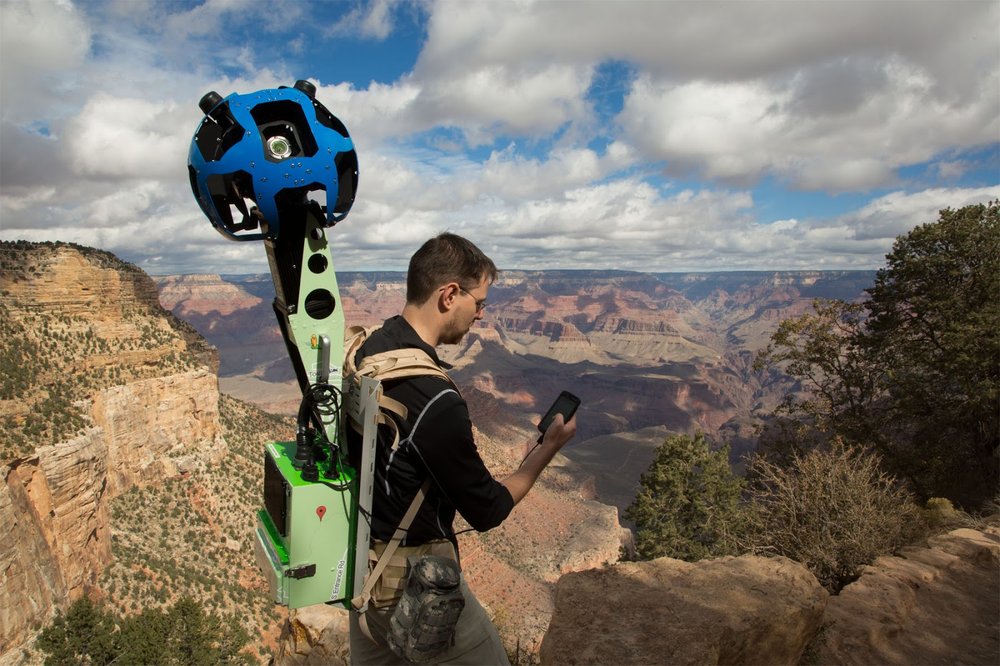
The Street View Trekker’s first stop? The Grand Canyon.
10. Say hello to hidden gems. Google Maps isn’t only about exploring the globe; we’ve also loved helping people find out what’s in their own neck of the woods. Building on our longstanding work to provide relevant local information, in 2014, we made it easier to browse information like hours, ratings and prices about restaurants, bars and hotels. Today, you can see these sorts of details for about 200 million businesses and places worldwide—right from your Explore tab.
11. Taking care of businesses. We’ve always made it a priority to help businesses share relevant information on Google, and in June 2014, we made that even easier with Google My Business. It’s a one-stop-shop for business owners to manage their presence on Google Maps and Search by updating their business info, adding photos, responding to reviews and more.
12. No connection? No problem. In November 2015, we launched offline maps, so that even when you don’t have connectivity, you can still get turn-by-turn driving directions, search for specific destinations and find useful information about places.
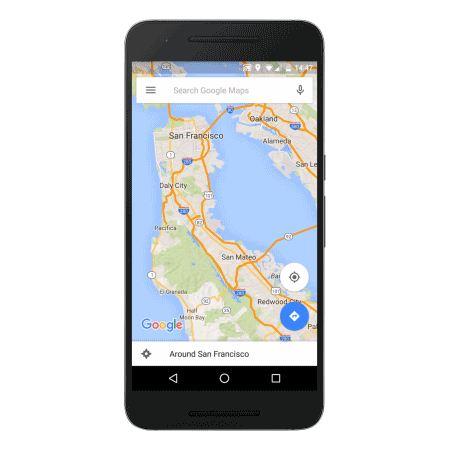
A GIF from 2015 showing offline access
13. Meet your Local Guides. In the same month, we introduced the Local Guides program, a passionate community of users (now 120 million Local Guides strong!) who share reviews, photos and knowledge about places around the world.
14. Have wheelchair, will travel. In March 2018, we brought wheelchair-accessible routes to Google Maps to make transit and navigation easier for those with mobility needs. Today, Google Maps includes accessibility info like wheelchair-friendly entrances and restrooms for more than 50 million places around the world.
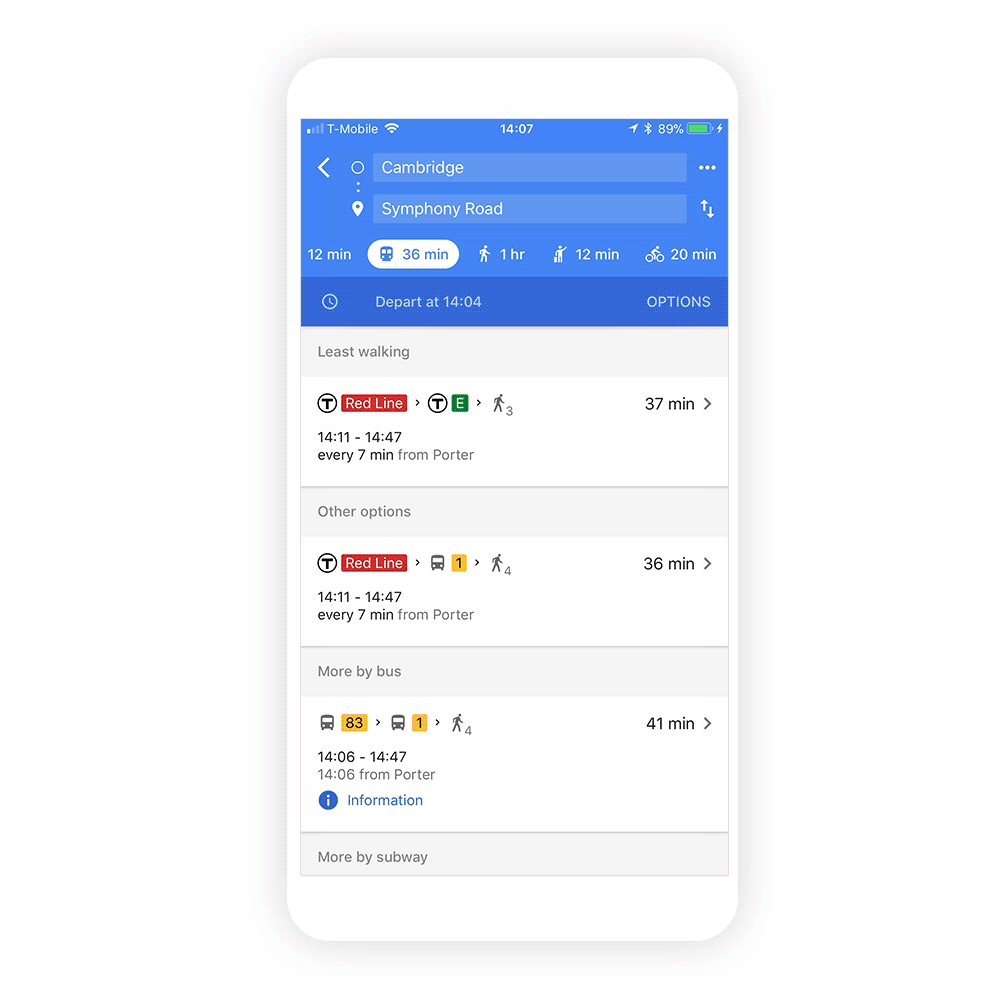
A 2018 GIF showing wheelchair accessible information in Maps
The world is constantly changing, and so is the way we get around in it. And as it does, Google Maps will be there every step of the way, building new tools that help you navigate, explore and get things done, wherever you are.
My first experience with coding came from trying to prove people wrong. At the end of eighth grade, my high school guidance counselor was adamant that I take Algebra I again, even though I’d already taken it in middle school. She claimed my class wasn’t rigorous enough—plus I didn’t know how to use a TI-82 calculator, which I’d need in subsequent math classes. My mom, a math teacher herself, would have none of it. I’d pass the Algebra I exam and learn how to use the TI-82 before school started. So that summer, I sat with the instruction booklet and taught myself the programming components on the calculator.
Through high school, I had fun writing little programs to check my math homework, but had no real exposure to computer science. It remained too intangible to consider as a major in college (let alone a career path), but through the encouragement of a college professor, I learned more about it. And even then, it was unfathomable that computer science could help me create Google Maps, a product that would delight, empower and inspire people, and change how they navigate the world.
There are many teens out there who are exploring how to use math and technology outside of the classroom. Just like I was in high school, some may be excited about the future of technology, but aren’t sure how to transform that excitement into something they can see, touch or feel. Let’s turn those ideas into code.
To show teens how they can be creators, not just consumers, of the apps they use all the time, Made with Code is joining forces with Snap Inc. to host a first-of-its-kind competition called #MyFutureMe. From now until October 8, teens can go to MadewithCode.com to code a geofilter (for the non-teens out there: it’s a creative overlay that shows where you are or what you’re up to) and submit a 100-word statement about the future you envision. You don’t need any prior coding experience to give it a try. Snap will choose five finalists to go to the TEDWomen Conference in New Orleans, LA, where they’ll receive mentoring sessions from Google engineers and work with Snap engineers to create a lens (again, for the non-teens: this is augmented reality technology that adds animations to your selfies, general photos, and the world around us).
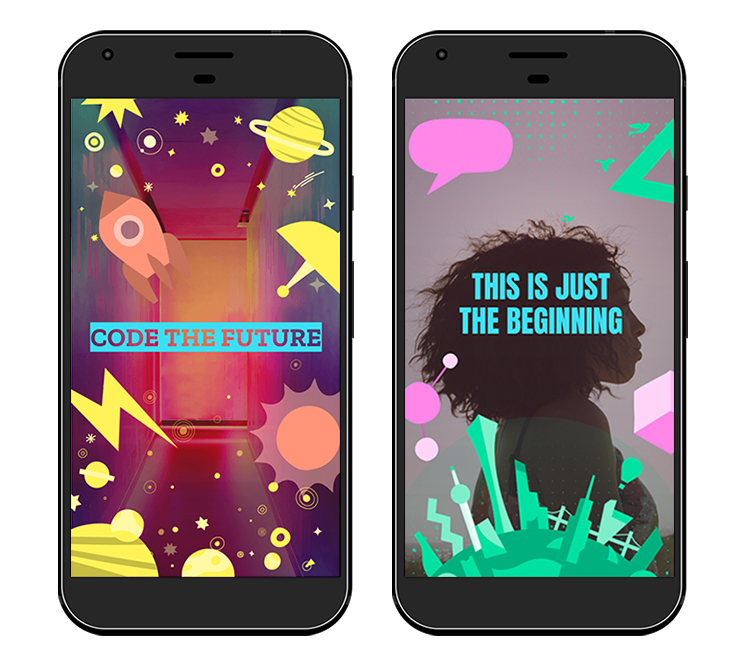
Two examples of what a #MyFutureMe coded geofilter could look like.
A panel of amazing people will judge the lenses from the five finalists. The panel includes our very own Ruth Porat (SVP and CFO of Google and Alphabet), Evan Spiegel (CEO of Snap), Malala Yousafzai (student, activist and Malala Fund Co-Founder), Joanna Coles (Chief Content Officer at Hearst), Laurie Hernandez (Olympic gymnast), Victoria Justice (actress and singer), Lilly Singh (YouTube personality, entertainer, and founder of Girl Love) and Dr. Yvonne Cagle (NASA astronaut). Together, we’ll choose one lucky winner whose lens will be eligible to go live nationally in the Snapchat app. They’ll also receive a trip to Los Angeles, CA, for a private, VIP tour of the Snapchat and Google offices.
With this contest, Made with Code and Snap will help teens nationwide see that the things they love, like Snapchat, are made with code. Teens are already Snapping. Let’s get them coding, too.
My first experience with coding came from trying to prove people wrong. At the end of eighth grade, my high school guidance counselor was adamant that I take Algebra I again, even though I’d already taken it in middle school. She claimed my class wasn’t rigorous enough—plus I didn’t know how to use a TI-82 calculator, which I’d need in subsequent math classes. My mom, a math teacher herself, would have none of it. I’d pass the Algebra I exam and learn how to use the TI-82 before school started. So that summer, I sat with the instruction booklet and taught myself the programming components on the calculator.
Through high school, I had fun writing little programs to check my math homework, but had no real exposure to computer science. It remained too intangible to consider as a major in college (let alone a career path), but through the encouragement of a college professor, I learned more about it. And even then, it was unfathomable that computer science could help me create Google Maps, a product that would delight, empower and inspire people, and change how they navigate the world.
There are many teens out there who are exploring how to use math and technology outside of the classroom. Just like I was in high school, some may be excited about the future of technology, but aren’t sure how to transform that excitement into something they can see, touch or feel. Let’s turn those ideas into code.
To show teens how they can be creators, not just consumers, of the apps they use all the time, Made with Code is joining forces with Snap Inc. to host a first-of-its-kind competition called #MyFutureMe. From now until October 8, teens can go to MadewithCode.com to code a geofilter (for the non-teens out there: it’s a creative overlay that shows where you are or what you’re up to) and submit a 100-word statement about the future you envision. You don’t need any prior coding experience to give it a try. Snap will choose five finalists to go to the TEDWomen Conference in New Orleans, LA, where they’ll receive mentoring sessions from Google engineers and work with Snap engineers to create a lens (again, for the non-teens: this is augmented reality technology that adds animations to your selfies, general photos, and the world around us).

Two examples of what a #MyFutureMe coded geofilter could look like.
A panel of amazing people will judge the lenses from the five finalists. The panel includes our very own Ruth Porat (SVP and CFO of Google and Alphabet), Evan Spiegel (CEO of Snap), Malala Yousafzai (student, activist and Malala Fund Co-Founder), Joanna Coles (Chief Content Officer at Hearst), Laurie Hernandez (Olympic gymnast), Victoria Justice (actress and singer), Lilly Singh (YouTube personality, entertainer, and founder of Girl Love) and Dr. Yvonne Cagle (NASA astronaut). Together, we’ll choose one lucky winner whose lens will be eligible to go live nationally in the Snapchat app. They’ll also receive a trip to Los Angeles, CA, for a private, VIP tour of the Snapchat and Google offices.
With this contest, Made with Code and Snap will help teens nationwide see that the things they love, like Snapchat, are made with code. Teens are already Snapping. Let’s get them coding, too.